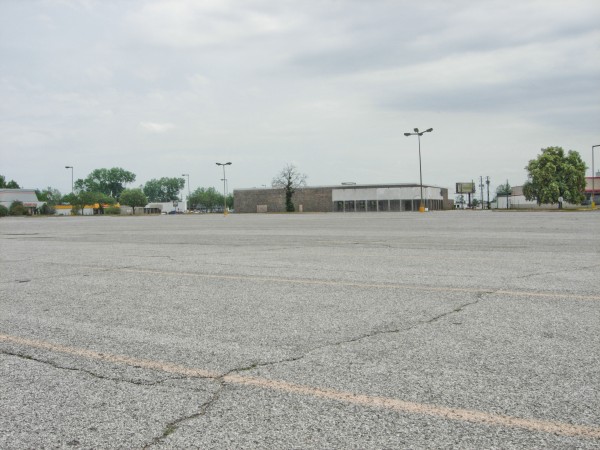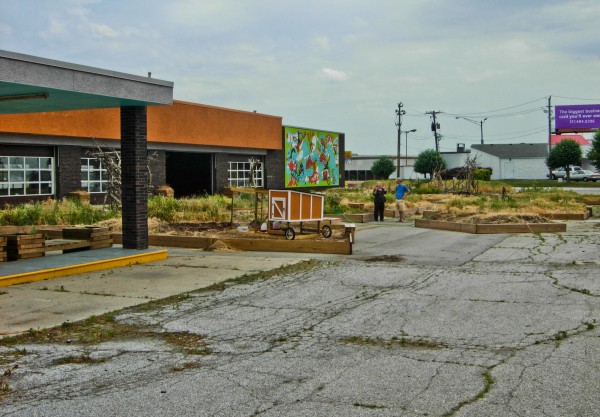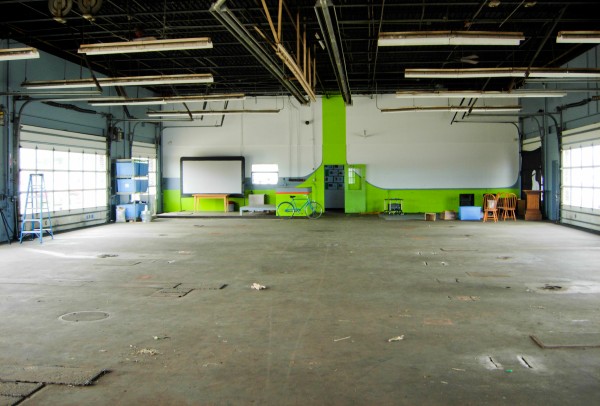-
Jim Walker’s Social Practice
by Ben Valentine September 18, 2012
When we talk about the ‘art world’ it is impossible to ignore the glaring, ‘us and them’. The art world is comprised of London, New York, Berlin, and Los Angeles: it is white males, who are educated, we chose this field out of a many options. What does the art world actually have to offer the them: those outside of the cities, those of different races and classes? This is the biggest question at every arts institution — how do we make meaningful, thoughtful, and beautiful art relevant to a wider audience? The question seems to be fighting to cover up what art traditionally truly is — an elite set of objects and performances made, written about, bought, and sold by an elite class. Throughout history, Art has very much been for an affluent section of society. Social Practice seeks to stir up a new art discourse that takes as it’s very foundation a different ideology.
If one can move past the old and boring question, “is it art?” we can see that Social Practice work has real value in everyone’s world, art or not. Although near impossible to define, Social Practice work is characterized by a collaborative spirit, participation from the audience, and emphasizes more direct and real world outcomes than any other art movement before it. Thus Social Practice work often looks more like community activism, protest, urban design and other fields outside traditional Fine Art.
In many ways, Social Practice is an obvious outcome of the common problems of the 99% — dealing with issues of health care, employment, community, and more is a truly vital task in our lives. Social Practice attempts to confront the real world issues asked by citizens and argued over by politicians. These are not art world meanderings about formal aesthetics and conceptual merit. They are by no means for an elite class of hyper-wealthy art buyers. This is work for your community, your neighbors, it’s for your children.

When considering the art world the question quickly becomes, what is the role of those left out? Should ‘secondary’ art cities and their creatives in Austin, Chicago, Detroit, Indianapolis, etc strive to become the next London? The Next Big Thing? Should artists in those cities be shooting for solo-shows in Chelsea, NY, like everyone else? Although they have every right to do so, artists are in a unique position to create the career they choose, maybe Social Practice work offers us another path. Maybe there could be a new definition of success for the creative minded in smaller communities. Maybe these cities and the creative class that chooses them should strive to serve their own, to be centers for local dialogue and benefit instead of global hubs.
Does Indianapolis need Blue Chip galleries and wealthy buyers to sustain them, or does Indianapolis need better education, healthier food, a more beautiful life, and more opportunities for its citizens? What would benefit the average Hoosier the most? Jim Walker, director of Big Car Gallery and founder of the Service Center, and his wife, chose to embrace their community artistically instead of the ‘art world’ writ large. Art can be for the people, and an arts institution can be solely for those living around it.
Walker is not against the art world: he was in charge of Big Car, which ran for 7 years in Indianapolis and housed readings, performances, art shows, and more. Walker’s wife, Shauta Marsh, is the Director of the Indianapolis Museum of Contemporary Art. This power duo is an undeniable force continuing and elevating the contemporary arts discourse in Indianapolis. But they wanted more.
Although Big Car was dedicated to widening the gallery audience by offering a variety of art and performances, the audience remained small. Somewhat disappointed, Walker wanted to dedicate his energy anew to Indianapolis, not just the arts community, and wanted more concrete results for anyone interested. Artists used his gallery space as a place to hang out with one another, not to build a new community.
So often smaller art spaces are seen as stepping-stones and not as destinations by the local artists they are trying to serve. This, I am ashamed to say, was my story: I moved to Indianapolis for a year and got as many internships and art shows as I could before moving to NYC. I took as much as I could, when I felt that I had something to offer in return, I left. My story is not unique, but Walker and Marsh wanted to change that narrative.

So in 2011 Walker and Marsh started the Service Center. Located in Lafayette Square, a rundown, strip mall area known for parking lots and ethnic restaurants, the Service Center slowly took form in an abandoned car repair shop and parking lot. The location became almost a challenge — how can art and community activism transform an architectural and public space wasteland such as Lafayette Square to serve the surrounding community and create something exciting, interesting, beneficial, and beautiful? This was not another alternative space in another soon to be hipster locale, this is something entirely different.
Although I didn’t grow up in Indianapolis, rather an hour east in Richmond, I am familiar with the type of setting the Service Center now grows in. Kids spend hours hanging out in parking lots, unsure of where to go or what to do. In some Midwestern towns, Walmart is actually a hangout for under 21-year-olds with a lack of options. Boredom and disengagement is a cancerous mix for a community.
Similarly, the endless and predominantly empty parking lots of Lafayette Square are mostly depressing to see, and seem indicative of a depressed economy. The lots idly sit in front of huge, long, and bland one-story buildings that house international restaurants, discount clothing stores, dollar stores, and everything between. Driving a block or two out of Lafayette Square, passing the ugly department stores, you find many small low-income homes of Indianapolis’ most ethnically diverse neighborhood.

What does the Service Center have to offer this area of Indianapolis? Together with many volunteers and a handful of employees, Walker and Marsh have equipped the old garage with an impressively wide range of tools and services for the local community. After talking with Walker for an hour and touring the facilities, the question became the opposite — what didn’t the Service Center offer? Walker said the real goal lies in “helping our city see that art can build community, can help transform neighborhoods and can help make people happy.” With 10,000 visitors in the first year, the Service Center is off to a great start. Walker elaborates:
We reach all kinds of people there — kids, senior citizens, young people who ride fixed gear bikes out, raw food lovers, the international community. That area of the city is the most diverse with people moving there from all over the world, lots of international business owners with a slew of ethnic restaurants and markets, and a very diverse customer base coming to support those businesses.
As you pull into the parking lot, the most obvious change is the outdoor community garden. Wooden planks partition off different sections for various foods, outdoor sculptures, and even a chicken coop. One worker is busy watering and weeding the vegetables. There are benches for resting and enjoying the plants, previously foreign to the setting. The urban garden sets the Service Center radically apart from the neighboring businesses.
Once inside, there is sunlight-filled room with large tables and chairs for community meetings, reading, and art making. The few walls that aren’t windows are covered in art made by the neighborhood’s children. In the corner there is a donation-made library, which I noticed had a wide variety ranging from children books to the latest books covering Social Practice, urban planning, and experimental art. What a wonderful thing to be introduced to these books at a young age. There is a small media room tucked to the side for screening movies and listening to CDs donated from indie record labels often featuring many local musicians. The furniture is in good repair for being mostly salvaged from the recently closed Borders bookstores.

In back there is a giant raw space where cars used to undergo various repairs. Now, left open to remain responsive to the dynamic community, this area houses concerts, installation art, public assemblies, and more. One day there could be welding and large installations here, and the next day, maybe a dance — the space is open for whatever and whoever.
The Service Center wanted to become the antithesis of what you imagine most social service buildings to be — cold, unwelcoming, and largely unsatisfying experiences. Though the architecture and location was not in their favor, Walker and Marsh managed to turn the Service Center into an inviting hub of activity that responds positively to suggestions and community direction. This is a space where a high school student or an academic scholar could propose a project, and be met with open arms and assistance.
I love MoMA, I love the work of the Heifer Foundation. But what relevance do these institutions have to someone in Indianapolis who cannot find work, whose children are bored, or someone who simply wants a more beautiful life? Although many citizens keep high art at arms length and visits to social service centers save only for the dire occasion, the Service Center offers a small answer to the struggles we all face, specifically for its community. It lives a model of growth that is smaller than major institutions, but maybe more beneficial in the long run to a community. This is a model for every city to learn from, but it’s an institution that is only for Indianapolis.
all images courtesy of Ben Valentine


